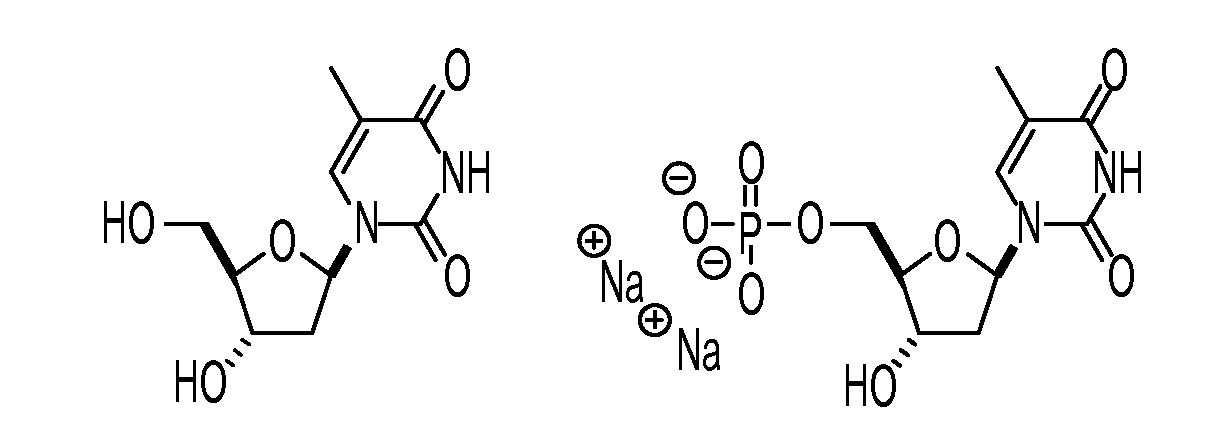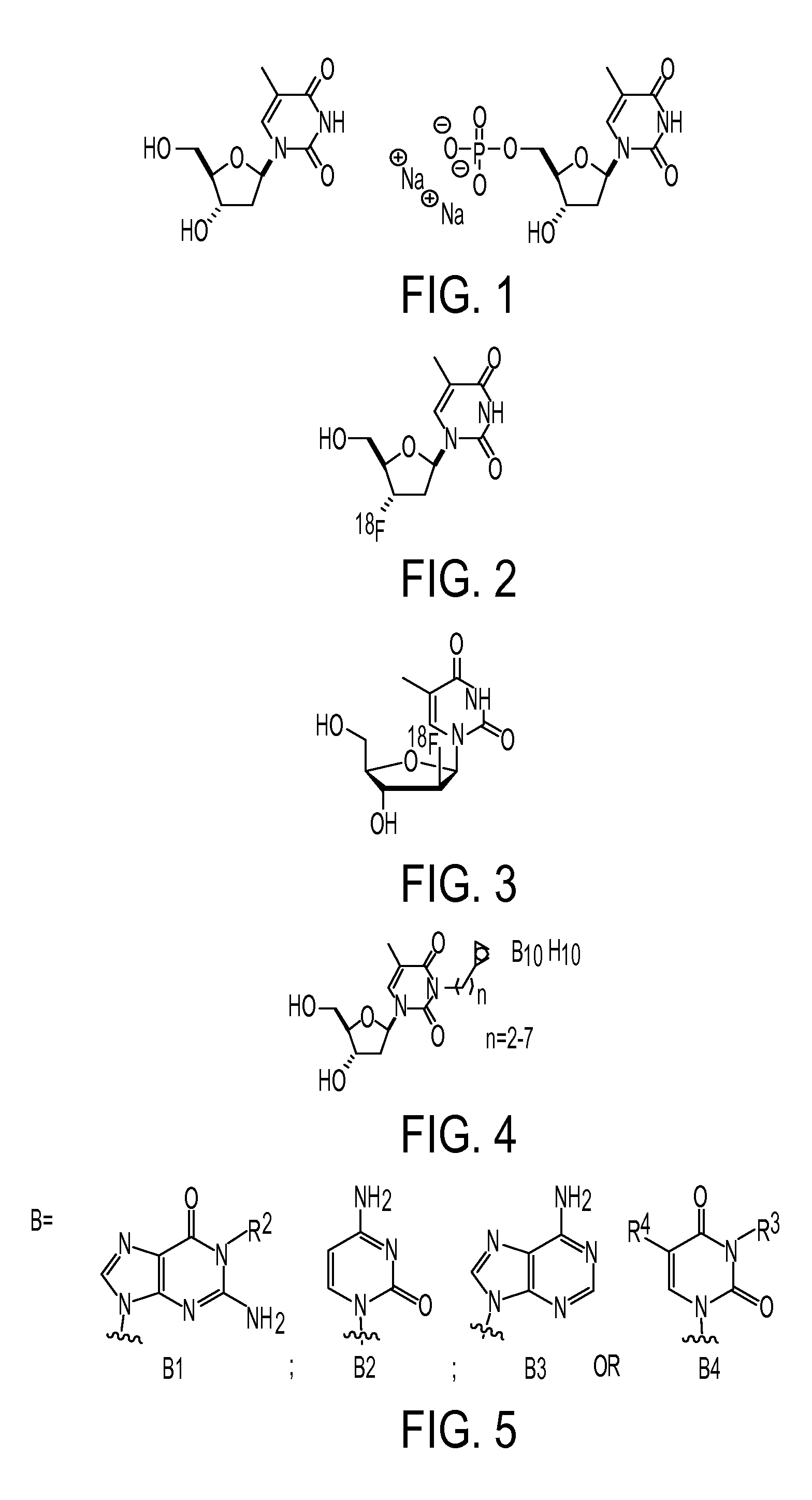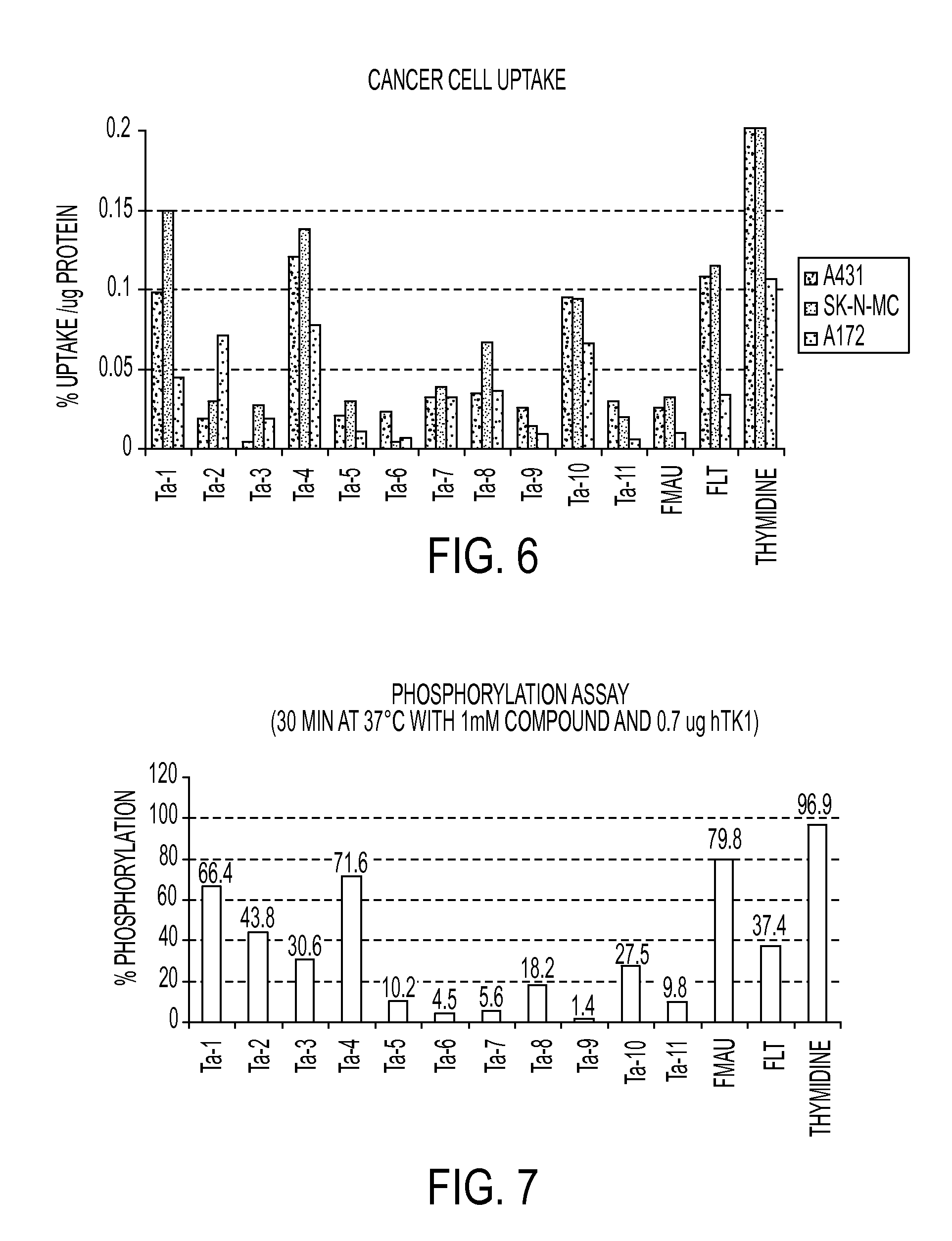Nucleoside based proliferation imaging markers
a proliferation imaging and nucleoside technology, applied in the field of nucleoside based proliferation imaging markers, can solve the problems of limited limited specificity of fdg-pet, and accumulation in inflammatory tissue, so as to improve the sensitivity of pet for tumor response prediction, improve the pharmacokinetic profile, and improve the signal to noise ratio
- Summary
- Abstract
- Description
- Claims
- Application Information
AI Technical Summary
Benefits of technology
Problems solved by technology
Method used
Image
Examples
examples
[0076]General. The human Thymidine Kinase-1 was ordered from Biaffin GmbH & Co KG. The LC / MS analyses were performed on an Agilent 1100 series LC / MSD (SL) using a 30×2.1 mm Zorbax C8 column with a Phenomenex C18 pre-column. Compound detection was accomplished by electrospray mass spectroscopy in positive selected ion mode (LC / MS-SIM). The elution solvents, acetonitrile and water, contained 0.05% TFA. Nuclear magnetic resonance (NMR) spectra were obtained on a Bruker AMX 300 MHz spectrometer. 19F NMR spectra were recorded on a Bruker AMX 282.35 MHz spectrometer. The mass spectra were recorded on an Agilent 1100 series LC / MSD with electrospray mass spectroscopic detection. Flash column chromatography was performed either on Merck silica gel (40-63 μm) using the solvent system indicated or on a CombiFlash purification system on silica gel cartridges. The radiochemical and chemical purities were analyzed by RP-HPLC.
Synthesis of Precursors and Standards:
[0077]
[0078]Synthesis of 2: To a r...
PUM
| Property | Measurement | Unit |
|---|---|---|
| molecular weight | aaaaa | aaaaa |
| molecular weight | aaaaa | aaaaa |
| temperature | aaaaa | aaaaa |
Abstract
Description
Claims
Application Information
 Login to View More
Login to View More - R&D
- Intellectual Property
- Life Sciences
- Materials
- Tech Scout
- Unparalleled Data Quality
- Higher Quality Content
- 60% Fewer Hallucinations
Browse by: Latest US Patents, China's latest patents, Technical Efficacy Thesaurus, Application Domain, Technology Topic, Popular Technical Reports.
© 2025 PatSnap. All rights reserved.Legal|Privacy policy|Modern Slavery Act Transparency Statement|Sitemap|About US| Contact US: help@patsnap.com



